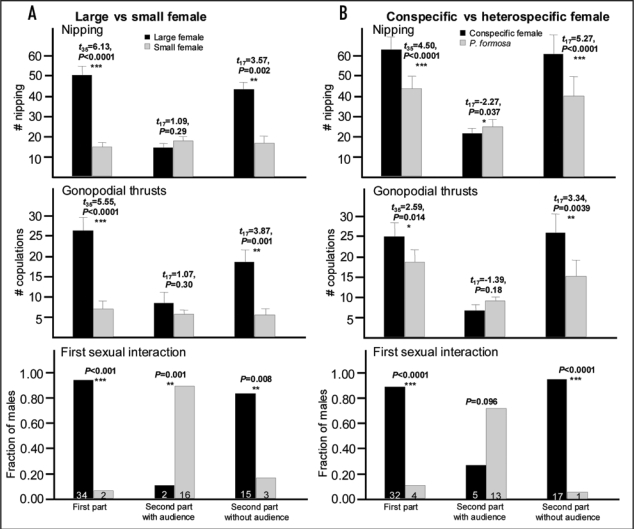Figure 4.
Change of mating preferences in the presence of an audience in P. mexicana males. During the first part (left), the focal male could interact with two females without an audience (A: large and small, B: conspecific and P. formosa females). During the second part of the trials, half of the males were visually presented with an audience male (middle), while another half of the trials were repeated without an audience (right). The direction of male preferences was determined using paired t-tests. Note that that the direction of male preferences remained unchanged when no audience male was presented but was altered when an audience was visually presented. Below: the female with which the focal males first interacted (Binomial test). Given is the fraction of males first approaching either type of females (bars) and the numbers of males (inserted numbers). Note that most males first interacted with the initially non-preferred female when an audience was presented.4

